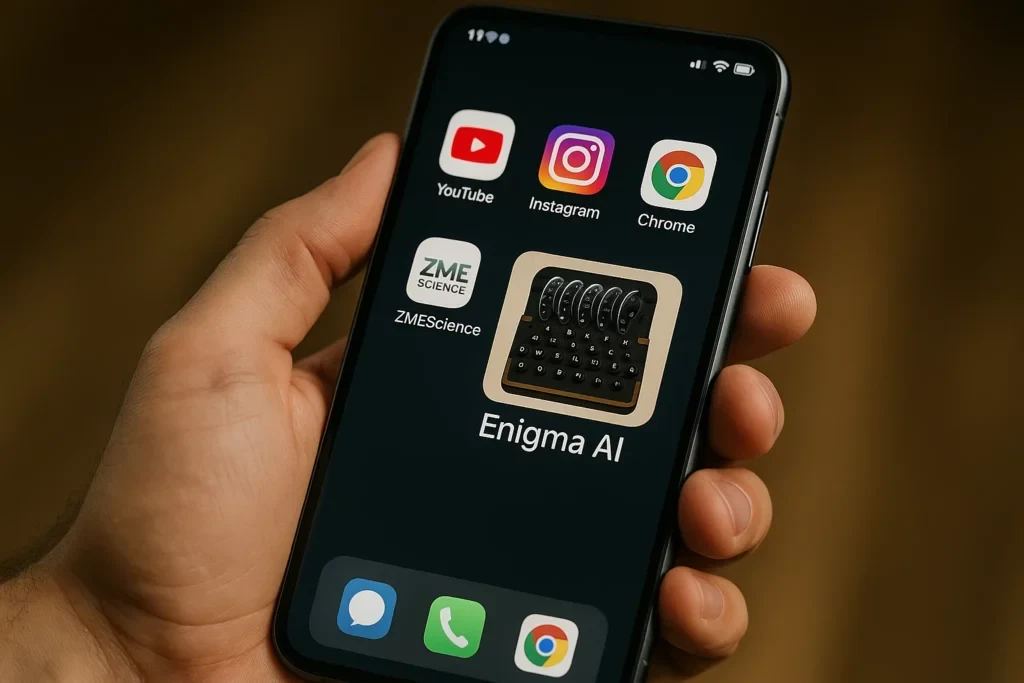At London’s Imperial War Museum, a group conducted an intriguing experiment:
they fed
A contemporary artificial intelligence tackles the issue that plagued Alan Turing during the bleakest moments of World War II and provides an answer in the time it takes to brew a cup of coffee.
This serves as a testament to the progress made in computing. However, it raises a significant question about the future direction of encryption.
Apparently Less Enigmatic Nowadays
The Enigma machine, featuring its trio of revolving rotors along with a complex plugboard, stood as Nazi Germany’s cherished possession. It symbolized for them an unbreakable shield. Each morning when German officers sent encoded communications, they were confident that the constantly shifting intricacy of their cipher—with daily changing configurations and no letter matching itself—was beyond what the Allied forces could decipher.
That confidence wasn’t absurd. The mathematics behind Enigma was daunting. Each rotor could be set to one of 26 positions, and combinations of plugboard wiring created over 150 quintillion possible configurations.
“The potential number of methods for encrypting a message was incredibly vast,” Professor Michael Wooldridge, a computer science specialist from the University of Oxford, explained to us.
The Guardian
Extremely vast beyond what a person could thoroughly examine.
Tackling the Enigma was an enormous challenge. This is why it took Turing and his team at Bletchley Park several months to make significant progress. Following the foundational work done by
Polish mathematicians
, the British team built their own machines—nicknamed “bombes”—which automated the brute-force search for valid Enigma settings. At peak efficiency, they could decrypt about two messages per minute. But every second mattered in times of war, and the cracking of the Enigma code was a pivotal moment.
“To be able to crack it—it took them months, more than a year—but to be able actually to do this within the lifetime of the war, it was a huge thing,” said Dr. Mustafa A Mustafa, a senior lecturer in software security at the University of Manchester. “God knows what would have happened if we hadn’t cracked Enigma in time.”
Modern Machines, Ancient Ciphers
Eighty years later, what once took bombes several hours can now be accomplished by modern processors in mere instants. An AI model trained on German with the help of Grimm’s Fairy Tales and supported by 2,000 cloud servers managed to decrypt a four-rotor Enigma message in less than 13 minutes.
In contrast to the inflexible techniques from Turing’s era, this artificial intelligence employed probabilistic reasoning—matching decrypted messages against linguistic patterns found in the German language. “This AI was designed to recognize German language structures and calculate the likelihood that a particular decryption accurately reflects the initial message,” explained Lukasz Kuncewicz, who leads as Head Data Scientist at Enigma Pattern, the firm responsible for the showcase.
Tech Radar
.
Wooldridge mentioned that the entire procedure could be carried out even more efficiently utilizing current computational models. “It would be quite simple to reimplement the logic of the bombes through a standard software program,” he stated. “Given the rapid processing speeds of today’s computers, the time-consuming tasks performed by the bombes would be completed extremely quickly.”
This does not imply that Turing’s legacy has been reduced; quite the contrary. His groundbreaking efforts deciphered an important war-time cipher and established the groundwork for the same technology that now makes his insights seem outdated. In fact, he is widely recognized as the progenitor of artificial intelligence.
As Wooldridge pointed out, ‘The bombes were basic mechanical devices with fixed wiring.’ He added, ‘It’s difficult to grasp just how potent contemporary data centers are. The Enigma wouldn’t stand a chance against them at all.’
The issue lies in determining how well our contemporary encryption methods can withstand possible assaults.

What implications does this have for encryption?
While cracking of Enigma might seem like a historical footnote, it raises pressing questions for today’s digital age.
If artificial intelligence can crack previously uncrackable codes, then which security measures still stand strong?
Come what may,
encryption systems like RSA
Maintain the security of the internet for now. However, since RSA was created in the 1970s and relies on factoring large prime numbers, it’s difficult to predict how much longer it will remain robust—especially considering the imminent arrival of quantum computing!
“In the case of RSA, it’s the problem of factoring very large numbers. Brute force techniques—looking through all the alternatives—just won’t work on these problems,” Wooldridge said. “If quantum computers ever deliver their theoretical promise, then we may need completely new techniques to keep our data safe.”
This is no longer the domain of spies and generals. As AI becomes more capable, the same techniques used to crack Enigma could potentially be turned on passwords, personal data, and secure communications. “It’s like a knife,” Kuncewicz said. “It can save lives or it can take lives.”
For now, most AIs require human oversight. The AI used in the Enigma test still needed engineers to check that it hadn’t gone off-track—declaring nonsense as meaningful. But this boundary is becoming increasingly thin.
Would Turing be amazed? Perhaps. But he might also have seen it coming.
The tale initially surfaced on
ZME Science
. Want to get smarter every day?
Subscribe to our newsletter
And keep up-to-date with the most recent developments in science.
